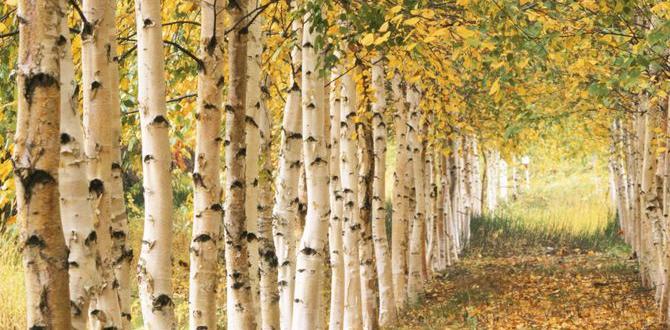Quick Summary: Mastering nail gun depth adjustment is crucial for a clean finish and secure hold. This guide provides professional tips to perfectly set your nailer’s depth, preventing over-driven or proud nails every time. Learn how to adjust for different woods and materials with ease.
Hey there, DIY warriors and aspiring woodworkers! Jack Shaffer here, your guide from Nailerguy. Ever fired a nail with your nail gun only to have it sink too deep, leaving a messy crater, or not deep enough, sticking out stubbornly? It’s a frustrating moment that can derail your project and your confidence. But don’t worry, getting that perfect nail depth is totally achievable, and it’s a skill that can transform your projects from “good enough” to “wow!”
The secret isn’t just picking up a nailer; it’s understanding how to fine-tune it for your specific task. We’ll dive into the simple mechanics of depth adjustment, explore why it matters so much, and I’ll share some pro secrets that seasoned builders use every day. Ready to make your nail gun a precision tool? Let’s get those nails sitting just right.
Table of Contents
Why Nail Gun Depth Adjustment Matters
Getting the nail depth perfect isn’t just about aesthetics; it’s fundamentally about the integrity and appearance of your woodwork. When a nail is driven too deep, it can:
- Damage the Wood: The nail head can crush the wood fibers, creating a larger hole or even splitting the wood, especially in softer materials.
- Weakhen the Joint: If the nail penetrates too far into the underlying material (like drywall behind sheathing), it might not get a secure grip in the intended wood, compromising the connection.
- Make Finishing Difficult: A nail driven too deep is harder to fill and sand smoothly, impacting the final paint or stain finish.
Conversely, when a nail doesn’t go deep enough:
- It Sticks Out (Proud): This is not only unsightly but also a snagging hazard. It makes planning for flush surfaces impossible and can interfere with subsequent steps, like adding trim or applying finishes.
- Poor Holding Power: A proud nail isn’t fully seated, meaning it won’t hold your pieces together as securely as intended.
The sweet spot is a nail head that is perfectly flush with the surface of the material, or slightly countersunk depending on the application. This ensures a strong hold, a clean look, and makes finishing a breeze. Fortunately, most modern nail guns make this adjustment straightforward.
Understanding Your Nail Gun’s Depth Adjustment Mechanism
Nail guns aren’t one-size-fits-all tools, and their depth adjustment systems reflect this. While the exact location and method can vary between brands and types (like framing nailers, finish nailers, brad nailers, or roofing nailers), the core concept is the same: controlling how far the firing mechanism drives the nail.
You’ll typically find the adjustment mechanism in one of a few common places:
- On the Nose of the Nailer: Many common finish and brad nailers have a rotating collar or a screw-like adjustment right at the tip where the nail fires. Turning this collar incrementally changes the depth.
- Behind the Trigger or On the Body: Some nailers, particularly framing nailers, might have a wheel, a slide, or a dial located behind the trigger or on the main housing of the tool.
- A Lever or Button System: Less common, but some tools use a small lever or button that you press and slide to different depth settings.
Always consult your nail gun’s manual! While the principles are similar, the precise operation varies. Your manual will show you exactly where the adjustment is and how to use it. You can usually find digital copies on the manufacturer’s website if you’ve lost the paper version. For example, DeWalt offers extensive support and manuals for their tools online.
Step-by-Step Guide to Adjusting Nail Depth
Getting the depth just right involves a bit of trial and error, but following these steps will make the process efficient and effective. Safety first, always!
Step 1: Safety First – Disconnect Power
Before you make any adjustments, always disconnect the air hose (for pneumatic nailers) or remove the battery (for cordless nailers). This is critical to prevent accidental firing while you’re fiddling with the tool.
Step 2: Identify Your Adjustment Control
Locate the depth adjustment mechanism on your specific nail gun. Refer to your manual if you’re unsure. It’s usually a prominent knob, wheel, or collar.
Step 3: Choose Your Material for Testing
You need a piece of scrap material that closely matches what you’ll be working on for your project. This is crucial because different wood densities and thicknesses will affect how the nail penetrates. Use the same type of wood (e.g., pine, oak, plywood) and if possible, the same thickness.
Step 4: Set Your Initial Depth (Start Conservatively)
If your nailer has numbered settings, start somewhere in the middle. If it’s a continuous adjustment, set it to a shallower depth initially. You can always drive it deeper.
Step 5: Test Fire (with Power Reconnected – Cautiously!)
Reconnect your power source (air or battery). Place the nose of the nail gun firmly against your scrap material. At this point, you can either:
- Sequential Trip/Fire Mode: If your nailer is set to sequential trip (meaning you have to tap the nose and then pull the trigger), gently tap the nose and pull the trigger.
- Contact Trip/Fire Mode: If your nailer is set to contact trip (meaning you can hold the trigger and tap the nose to fire), hold the trigger down and tap the nose against the wood.
Important Safety Note: Always keep your trigger finger off the trigger when not actively firing, and never point the nailer at anyone. Ensure the workpiece is stable and you have a firm grip on the tool.
Step 6: Inspect the Nail Depth
Examine the nail you just fired. Is it:
- Proud (Sticking Out)? The nail isn’t deep enough.
- Flush or Slightly Countersunk? This is likely your target depth.
- Driven Too Deep (Creating a Crater)? The nail is going in too far.
Step 7: Adjust and Repeat
Based on your inspection, disconnect the power again and make an adjustment:
- Nail is Proud: Adjust the depth mechanism to drive the nail deeper. This usually means turning the dial or collar in a specific direction. Check your manual; often, clockwise or towards a (+) symbol means deeper.
- Nail is Too Deep: Adjust the depth mechanism to drive the nail shallower. This usually means turning the dial or collar in the opposite direction, or towards a (-) symbol.
Reconnect power and fire another nail into the scrap material adjacent to your first test nail. Repeat steps 5 through 7 until you achieve the desired depth.
Step 8: Fine-Tune for the Project
Once you’re happy with the depth on your scrap wood, consider the specific application. For instance:
- Face Nailing Trim: Aim for heads slightly shy of the surface (countersunk) so they can be easily filled with putty.
- Attaching Plywood Sheathing: You want the nails to be flush, not proud, and not so deep they significantly split the wood edge if nailing near the boundary.
- Blind nailing (e.g., baseboard shoe molding): You’ll aim for a very slight countersink so the nail head can be easily covered by the subsequent trim piece.
You might need to make very minor adjustments based on the wood type and grain direction. It’s always better to have to make a small adjustment than to over-drive the first few nails.
Table: Adjusting Nail Depth – Dos and Don’ts
Here’s a quick reference to keep in mind during the adjustment process:
| Do | Don’t |
|---|---|
| Always disconnect power before adjusting. | Make adjustments while the tool is powered on. |
| Test on scrap material identical to your project wood. | Test fire on your actual project pieces before getting the depth right. |
| Start with a shallower depth and increase as needed. | Start with the deepest setting and try to back off. |
| Consult your tool’s manual for specific instructions. | Assume all nail gun adjustments work the same way. |
| Make small, incremental adjustments. | Turn the adjustment knob drastically in one go. |
| Check the nail depth after each adjustment. | Fire multiple nails without checking if the depth is correct. |
| Consider the desired finish (flush, slightly countersunk). | Aim for the same depth on all projects regardless of finishing needs. |
Factors Affecting Nail Depth
It’s not just the nail gun’s setting that influences how deeply a nail penetrates. Several other factors play a role:
-
Nail Gun Power:
- Air Pressure (Pneumatic): For pneumatic nailers, the air pressure directly affects the force applied. Too low, and nails won’t set; too high, and they’ll drive too deep. Ensure your compressor is set to the manufacturer’s recommended PSI for your nailer. A good source for general understanding of PSI can be found on the OSHA standard for air-powered equipment, which advises adherence to manufacturer specifications.
- Battery Power (Cordless): For cordless nailers, a fully charged, healthy battery will provide consistent power. Older or weaker batteries might result in weaker drives.
-
Material Density:
- Hardwoods (e.g., Oak, Maple): Nails will penetrate less deeply into dense hardwoods. You might need to set your nailer for a deeper drive.
- Softwoods (e.g., Pine, Fir): Nails will sink more easily into softwoods. You’ll likely need a shallower setting to avoid over-driving.
- Engineered Materials (e.g., MDF, Particle Board): These can be soft and crumbly. Nails can easily over-drive or cause the material to chip. Adjust carefully.
-
Nail Size and Type:
- Longer or thicker nails require more force to drive effectively.
- Different nail heads (e.g., round head vs. clipped head) might sit differently.
-
Angle of Impact:
Hitting the material at a slight angle can sometimes affect depth. Always try to drive the nail as perpendicular to the surface as possible.
-
Surface Texture:
Hitting a knot or a particularly hard grain section can resist the nail, making it seem like it’s not sinking enough. Conversely, hitting a softer, pithy section might let it sink too far.
Pro Tips for Perfect Nail Every Time
Beyond the basic adjustment steps, here are some seasoned tricks to elevate your nailing game:
- Know Your Nailer’s Sweet Spot: Every nail gun has an optimal operating air pressure or battery charge. Refer to your manual and aim to keep your tool within these parameters for consistent driving. For pneumatic nailers, using the correct regulated air pressure from your compressor is paramount.
- Feather Those Adjustments: Don’t crank the adjustment knob back and forth wildly. Make small turns, test, and then adjust again as needed. You’re aiming for precision, not brute force.
- Listen to Your Nailer: Experienced users can often tell if the air pressure is off or if the depth is wrong by the sound and feel of the nail gun firing. A duller thud might indicate insufficient power, while a sharp crack followed by a soft impact could mean over-driving.
- The “Tap Test” for Trim: When nailing trim, especially delicate pieces, after setting your depth, fire a nail into a hidden spot (like a scrap piece of trim) and then gently tap the nail head with a hammer. If it’s slightly proud, it should sink easily. If it’s deep, you’ll feel resistance or even dent the wood around it.
- Keep the Nose Flush: Ensure the contact tip of your nail gun is pressed firmly against the workpiece before you pull the trigger. If the nose is floating or angled, you’ll get inconsistent results. This is especially true for safety contact trip mechanisms that rely on pressure.
- Practice on Similar Grain: If you’re working on a piece with varied grain density, try to test-fire on a section that’s representative of the area you’re about to nail.
- Consider the Finish: For applications where you’ll be filling nail holes (like furniture or trim), setting the nail just slightly below the surface (a faint countersink) is ideal. This gives the wood filler or putty a clean surface to adhere to without creating a large depression. For structural work like framing, flush is usually the goal.
- Clean Your Nailer Regularly: A clean, well-maintained nail gun performs more consistently. Check the driver blade and magazine area for debris. Refer to your manual for maintenance tips. Resources from organizations like the ToolPro often provide excellent maintenance advice.
Table: Nail Depth Settings for Common Materials
This table provides general guidance. Always test in your specific situation!
| Material Type | Typical Nail Gun Setting (Relative) | Desired Nail Depth | Notes |
|---|---|---|---|
| Softwood (Pine, Fir) | Shallower | Flush to slightly countersunk | Easily over-driven; watch for splitting on edges. |
| Hardwood (Oak, Maple, Cherry) | Deeper | Flush | May require higher air pressure (pneumatic) or more battery power. |
| Plywood (Standard Construction) | Medium | Flush | Drive consistently, avoid over-driving near edges. |
| MDF/Particle Board | Shallower/Careful | Flush (or slightly proud if filling) | Very easy to over-drive and crush fibers. Use care and test. |
| Drywall (e.g., behind furring strips) | Medium | Slightly countersunk (creating a dimple) | Nail head should break the paper surface but not tear excessively. |
| Composite Decking | Medium/Deeper | Flush or very slight countersink | Can be harder than wood; follow manufacturer recommendations for hidden fasteners. |
Troubleshooting Common Nail Depth Issues
Even with adjustments, you might encounter a few hiccups. Here’s how to tackle them:
-
Problem: Nails are consistently proud.
- Solution: Your nailer is set too shallow, or your power source is too low. Increase the depth setting incrementally. For pneumatic tools, check and increase your air pressure dial on the compressor within the recommended range for your tool. Ensure your battery is fully charged.
-
Problem: Nails are sinking too deep (cratering wood).
- Solution: Your nailgun is set too deep, or your power source is too high. Decrease the depth setting incrementally. For pneumatic tools, reduce the air pressure from the compressor.
-
Problem: Depth is inconsistent from nail to nail.
- Solution: First, check your power source. For pneumatic, ensure consistent air pressure from the compressor and that your regulator is set correctly. For cordless, try a fresh battery. Make sure you are holding the nail gun firmly and flush against the surface. Dirt or debris in the magazine or driver assembly can also cause inconsistency; clean your tool.
- Problem: The




